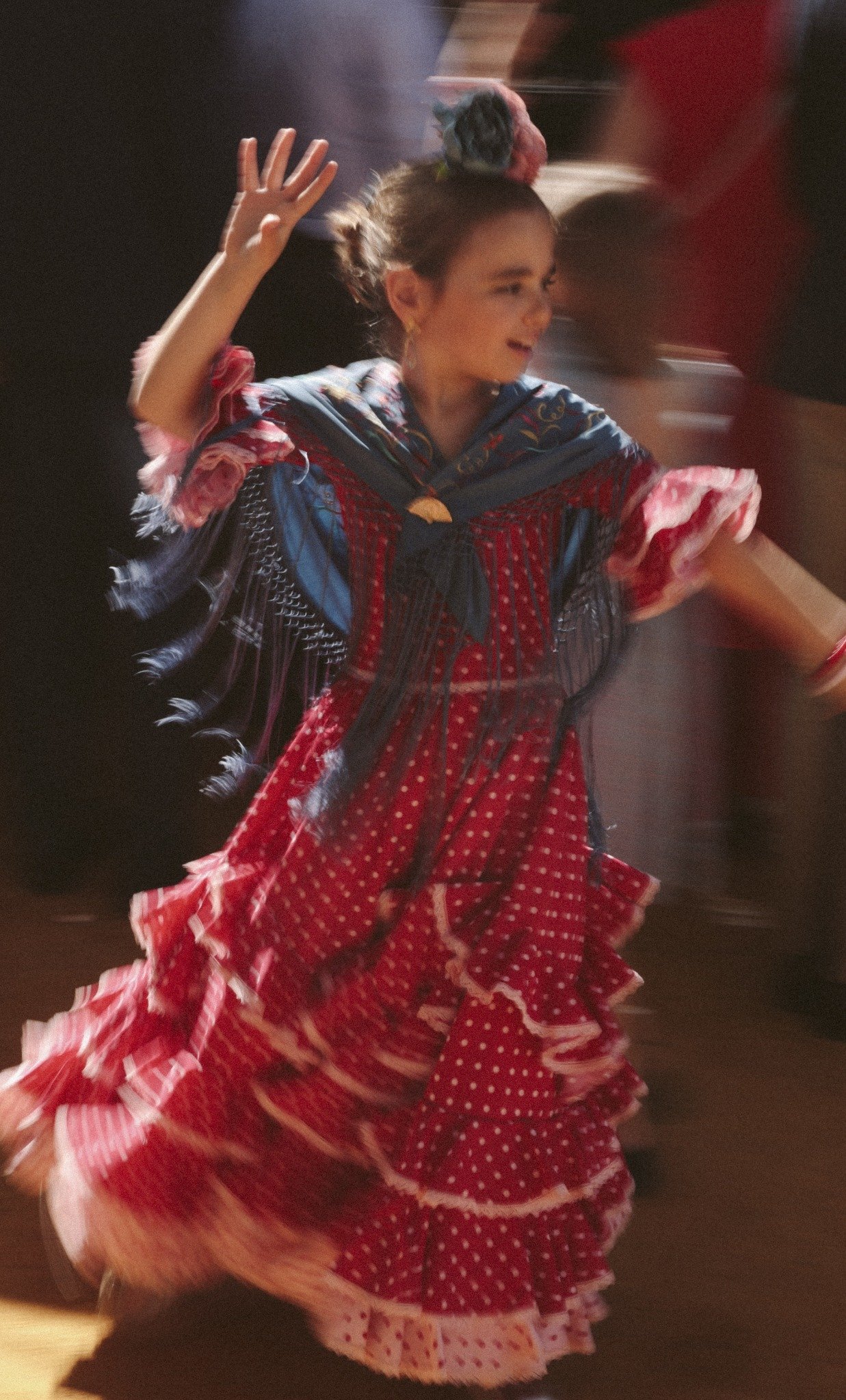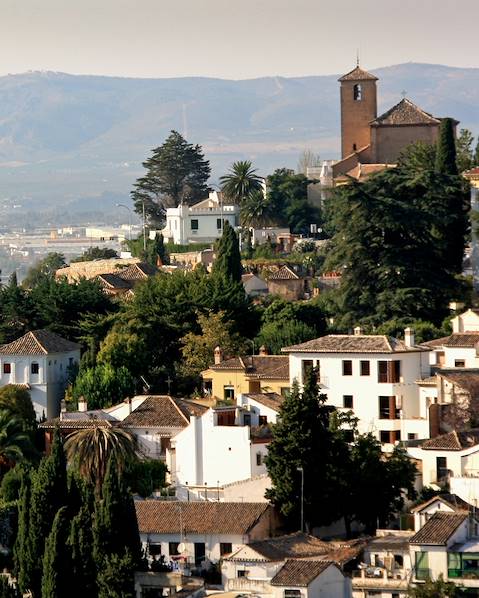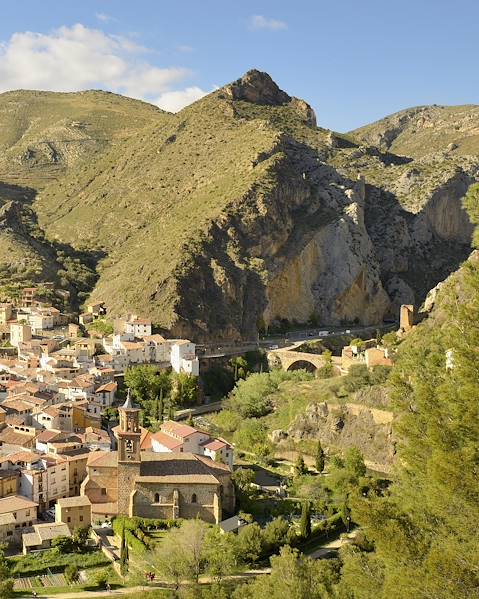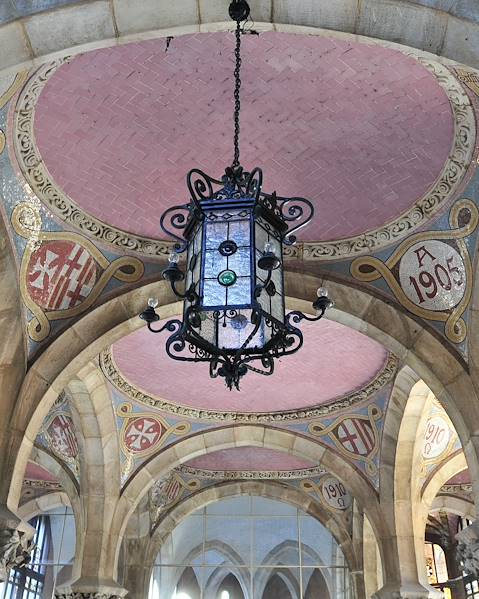Things to do in Barcelona & Catalonia
Wine Trails of Priorat
Hike the wine trails of Priorat, a mountainous region in Catalonia best explored on foot. Start your trek at Falset, a town famous for its spring wine festival offering up local fare, wine tastings and classical music. Then take the rural Camins del Vi path to the village of Gratallops, where some of the best wines in Spain are produced, making pitstops at various vineyards along the way.
The Land of Dali
Head to Emporda's medieval villages and towns, ambling along cobbled paths, past charming porticoed houses and Romanesque churches. Visit Figueres, the birthplace of Salvador Dali and home to the Dali Theatre Museum where the great surrealist painter is buried in a crypt below the stage. Stop at unspoilt Cadaques with its pretty waterfront and cliff-edge vistas before pausing at Port Lligat, a small village where Dali lived for five decades.
The Ruins of Empuries
Visit the Greco-Roman ruins of the Empuries, an archaeologist's playground, named by UNESCO as one of the most beautiful sites in the world. As you stroll around the sea-facing ancient city of the Emporion, you can still make out intricate mosaics and elaborate ornamentation. Peruse remnants of the Basilica and magnificent amphitheatre as well as the statue of Aesculapius, over 2,000 years old and the jewel of the Empuries.
Things to do in Bilbao, San Sebastian and Rioja
Pinxtos Tasting Tour
Experience San Sebastian, Spain's culinary capital, on a world-renowned pintxos tour. Pintxos (Basque tapas) can be found in every bar but with your guide's know-how, you'll sample the finest selection on offer from fresh baby squid and bacalao to perfectly charred meats. Thirsty? Not to worry - each pintxo comes paired with a local wine or cider.
Guggenheim Museum Bilbao
Visit the Guggenheim Museum Bilbao, one of the finest examples of contemporary architecture on the planet. From the outside you can admire two great sculptures, a giant spider created by Louise Bourgeois and a Jeff Koons 40ft-tall puppy fashioned out of flowers. Inside, peruse an art collection that's just as captivating as the building fashioned out of swirling titanium forms.
Bodegas Valdelana Wine Tour
Take a tour of the Bodegas Valdelana, a family-run winery and olive factory located in the village of Elciego, the birthplace of Rioja. Enjoy a history lesson in the on-site museum, converted from a former wine cellar, parts of which date back to the 15th century. Afterwards you'll get to taste flavourful olive oil dipped in bread and four distinctly different riojas.
Visit a gastronomic society
The Basques are a competitive bunch and the rivalry between San Sebastian’s txokos (gastronomic societies) has led to huge culinary innovation in the region. Join one of these secretive groups as they prepare a spectacular local lunch.
Things to do in Inland Andalucia
A Tour of Cadiz
Wander around the cobbled streets of this 3,000-year-old city. Inhabited by the Romans and the Moors, and sacked by the British during the Crusades, Cadiz is packed with history. Head to the baroque Cadiz Cathedral boasting a golden dome best admired at sunset from the outskirts of the city. The 18th century watchtower, Torre Tavira, and the Mercado Central (full of fresh seafood) are also well worth a visit.
The White Towns of Andalucia
Explore the White Towns of Andalucia, whitewashed in the 19th century to stave off the sun's rays. Visit Arcos de la Frontera, the gateway to these unspoilt historical villages. Its narrow, winding streets and 11th century Moorish castle evoke powerful memories of the town's tragic history. Then stop at Vejer de la Frontera, also heavily influenced by the Moors and a tapas lover's paradise.
The Beaches of the Costa de Luz
Leave your shoes at home and discover the fine sandy beaches of the Costa de Luz. Exposed to the sweeping Atlantic sea, these beaches are a surfer's dream. Head to Tarifa, the windiest province in Europe for immaculate long beaches, optimal kite-surfing conditions and a vibrant nightlife. Or visit the neighbouring Zahara de los Atunes; laidback, laden with sunbeds and great for families.
Things to do in Seville
Tapas and Flamenco
Combine two of Spain's most beloved pastimes - eating mouth-watering tapas and watch authentic flamenco in the neighbourhood where it all started. After a brief introduction to this mesmeric dance, and a couple of aperitifs, head to the Triana district, the heartbeat of the city's flamenco scene, where you'll visit several bars, gorging on delightful tapas while viewing a world-class performance.
Experience the Alcazar
Visit the 14th century Alcazar, a mesmerising medieval royal palace with UNESCO World Heritage status. Peruse its romantic interiors with beautiful ceramic tiles and exquisite gold ceilings. A walk through the gardens, particularly alluring on a summer night, is a must; breathe in the sweet scent of orange trees as you stroll through the magnificent terraces interspersed with peacocks, pavilions and ornate fountains.
Guadalquivir River Cycle
Take a gentle bike ride along the river, a great family activity with over 80 miles of designated bike lanes to choose from. Start at the Torre del Oro, a spectacular Moorish defensive tower facing Calle Betis, one of the city's most picturesque streets. Absorb the city's colonial history as you leisurely pedal past its breath-stealing architecture, and stop for respite in one of the lovely shaded parks.
Riding in Donona National Park
Under an hour from Seville, explore the breathtaking beauty of Donana National Park on
horseback. Ride out on a steed matched to your experience through pristine dunes, lush wetlands and pine forests, spotting wildlife like flamingos and deer.
Best of Spain
City Tour of Seville
Seville is a showcase of the era of Muslim domination in Spain, with La Giralda - the tower of the stunning cathedral - the best-known of the remaining Islamic monuments.
Sights in Seville include the Alcazar, a former Moorish palace complete with magnificently intricate decoration and wonderful gardens, and the magnificent Fabrica de Tabacos, now part of the university.
Original Travel can arrange a guided walking tour of this very accessible (and flat) city, or you can rent bicycles to explore at your own pace. We also know all the very best of the - extremely numerous and delicious - tapas bars.
Seville's April Feria
The feria in Seville is a Spanish fiesta at its best, giving the gentry of Andalucia an opportunity to see and to be seen, and us a chance to experience all things Andalusian - sherry, Sevillanas, toros, flamenco dresses and horses.
The week of the Feria in Seville is a vivacious celebration of life. In the week following Semana Santa (Holy Week) the city comes alive with a highly animated crowd who chat, laugh, eat and drink day in day out in the city tapas bars lining the narrow, cobbled streets of the old Moorish medina. Musicians perform to small, intimate crowds on street corners while horse and carriages clip clop around the city, with couples or families making their way to the next bullfight. The colours in Seville at this time are phenomenal, most noticeably in the Sevillana dresses and flowers worn by the women.
During the Feria itself, row upon row upon row of casetas (mini marquees belonging to affluent local families, businesses, groups of friends and political parties) line the sandy streets of the appropriately named Feria de Abril district. People wander around, manzanilla sherry (finer than fino, we think) in one hand, jamon iberico in the other, dancing the Sevillana with strangers. This being Spain, the party continues 24/7 from midnight on Tuesday until midnight on Sunday and is enjoyed by everyone from children to pensioners.
We recommend the notorious and fun ""Er 77"" caseta, where the wine is drawn from a well and then poured from buckets, and beds are provided in the back area for guests to sleep off the wine. Another famous tent is ""Los Duendes de Sevilla"" (The Goblins of Seville) named after a play by Alvarez Quintero.
As well as exploring the Feria there is also the chance to see and meet some real Flamenco artists and furthermore be taught by them. Our guide, Jaime Trancoso, is based in Seville, and is one of the most influential people in the world of Flamenco art and classical music in Spain.
Photography Courses at Hacienda San Rafael
Want a relaxing holiday and to learn a skill while you're at it? We can't think of many better combos than a stay at one of our all time favourites - Hacienda San Rafael in Andalucia - with a superb photography course thrown in to boot.
The Andalucia School of Photography is planning more 'Art and Technique in Photography' courses at the Hacienda San Rafael, so watch this space or contact us for more information.
Hosts Sue Callister and Alberto Saro established the Andalucia School of Photography in 2007 in the belief that to teach well it is necessary to give the highest level of personal attention. The courses are designed so that the maximum ratio of class size is six students per instructor, allowing an unrivalled level of personal guidance in a relaxed environment.
You will learn to make the best use of the controls on your digital camera and how to best express what you are seeing and feeling through your photography. Capture spectacular landscapes, beautiful buildings, forests and stunning sunsets and learn new photography skills that will stay with you long after the holiday is over.
And what better location to put new found skills to the test than the stunning and diverse scenery of Andalucia, from the rugged limestone landscapes of the Sierra de Grazalema to atmospheric architecture and charismatic characters in Seville.
Riding Safaris at Hacienda San Rafael
'Riding in the hills of Andalucia' has a rather nice ring to it, and with good reason.
These riding safaris take you into the heart of Andalusian horse country and Doñana, Europe's largest national park, at the mouth of the Guadalquivir River. Quite apart from riding through wonderful landscapes on beautifully schooled Arab crosses, this is also a chance to enjoy delicious regional food and wines and the comforts of the delightful Hacienda San Rafael.
Doñana National Park is criss-crossed with trails and ancient bridleways that make for excellent gallops, but when you're going a little slower there is also a huge amount to see. The diverse terrain is a result of this once being the delta of the Guadalquivir, the 'big river', or Wada-I-Kebir as it was known to the Moors. It is said that in ancient times the area was dotted with islands, one of which was supposedly the capital of the mythical kingdom of Tarshish. Gradually the area silted up, giving way to a landscape of marshes, shifting sand dunes and pine forests shunned by people but ideal for wildlife.
Now, during the winter floods, thousands of birds migrate to the park, including huge flocks of geese from northern Europe and large stands of flamingos. Come springtime the water level drops, leaving rich deposits of silt sandbanks that are ideal for wading birds including grey herons, egrets, spoonbills and storks which then nest here. The lagoons found all over the park are also regularly visited by fallow and red deer as well as wild boar.
Spend your days exploring this beautiful park and enjoying delicious traditional Andalusian picnics. In the evenings stay at the marvellous Hacienda San Rafael, where classic Andalusian style and Eastern touches are fused with élan in the informal drawing room with its roaring fire and lovely hanging paintings. After a delicious supper using local and fresh produce, head back to the stylish, comfortable rooms through the bougainvillea-filled courtyard. All rather perfect, we're sure you would agree.
Climb Mount Teide
Closer to Africa than Europe, Tenerife is dominated by the Teide volcano, Spain's highest mountain, whose lunar landscapes are fascinating to explore.
There are a number of walking trails up and around the mountain, and Original Travel can arrange a guide if required. There is a cable car to the higher reaches, but then the rest must be done on foot and a permit needs to be bought in advance for this. We can also help with this.
For anyone wanting to spend more time up on the mountain, there is a charming parador (Government-run guesthouse) in the National Park where you can spend a night or two. But a word of caution - it can get pretty chilly up Mt Teide, so take a warm layer.
Running in Mallorca
'Running' and 'mountains' might not be two words you want featured in the same sentence, but the island of Mallorca has some of the finest mountain scenery, and trails on which to explore them, anywhere in the Mediterranean region.
These trails can, of course, be explored at a gentle walk, but running them adds a certain challenge, and boy does the view from the top look good when you're there.
Our running guides know the various mountain (and coastal) trails inside and out, and can tailor a route to suit your exact requirements, be that a marathon training programme or a one-off run to blow away the cobwebs. All the guides are trained in first aid and orienteering, and cater for small groups but also individuals.
According to your fitness level and preference, they can take you to some of the highest peaks on Mallorca (as high as 4,484 ft), or along old monastic trails between remote villages. There are also some lovely beach and forest routes that are equally picturesque but a little less challenging.
Surfing in Spain
There's something innately sophisticated about surfing on a beach break slap bang in the centre of a city.
It works in Rio, and in its smaller European equivalent San Sebastian. The prime surfing beach, Zurriola Beach is set against a backdrop of elegant belle époque streets.
This is a beach break, so safe for beginners but fun enough for pros as well, and in a city with food this good, the ability to exercise off a few calories is doubly attractive. Original Travel can arrange surfboard and wetsuit hire, and lessons for beginners.
Gourmet Tasting Tour
It was a tough job, but someone had to trawl all the pintxos (Basque for tapas) bars in San Sebastian to let you know which were the best.
In San Sebastian there's undoubtedly plenty of choice, but it's the general level of quality of produce (in even the scruffiest looking bars) that really appeals. The fact that these delectable delights are all served in atmospheric surroundings in the elegant grid of streets, which make up the Old Town, just adds to the whole experience. San Sebastian has more Michelin stared restaurants than anywhere else barring Manhattan.
It's not just San Sebastian that carries the flag for Basque food though as Bilbao also has its fair share of excellent pintxerias and we've gone to enormous lengths to sample these too.
Guggenheim Museum
The most striking symbol of Bilbao's transformation from decaying industrial backwater to hip international metropolis is the Guggenheim Museum.
The Guggenheim Museum with its shimmering titanium shell, moored like a ship on the banks of the Nervión River acts as a nod to the city's ship-building past. Outside the museum sits Jeff Koons' iconic and kitsch floral sculpture of a giant puppy.
Some have argued that the building completely overshadows the quality of the art inside, but with a building this special that's no great shame, and often the exhibitions of contemporary art on display are of a very high quality. Original Travel can pre-book tickets or arrange private guided tours.
Las Fallas
In a country renowned for it's extraordinary festivals, Las Fallas is the most unusual of the lot, and fortunately there's not a goat or a bell tower in sight.
Europe's wildest street party sees giant papier-mâché effigies of politicians and celebrities paraded through the streets before being consumed by flames and fireworks - think bonfire night multiplied by 100.
Light sleepers or anyone looking for an early night might be advised to give this one a miss. Plus there's the usual local street parties and copious alcohol consumption, and have you ever noticed how the Spanish manage to do all this with a bit of charm?
If Las Fallas isn't enough, La Tomatina, the annual tomato-throwing festival is held in the nearby town of Buñol every August.

















